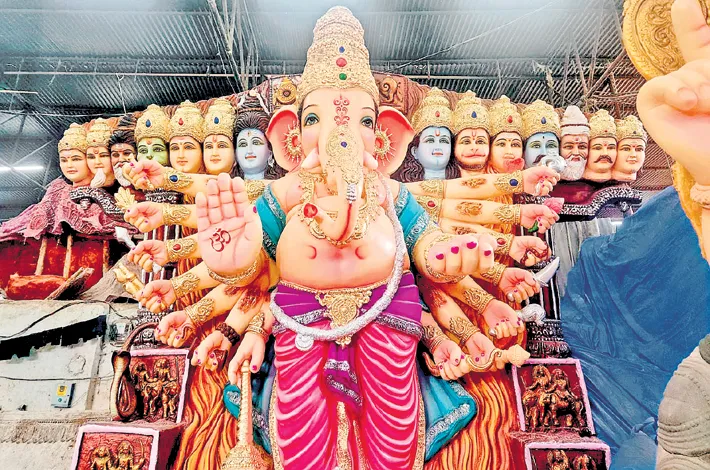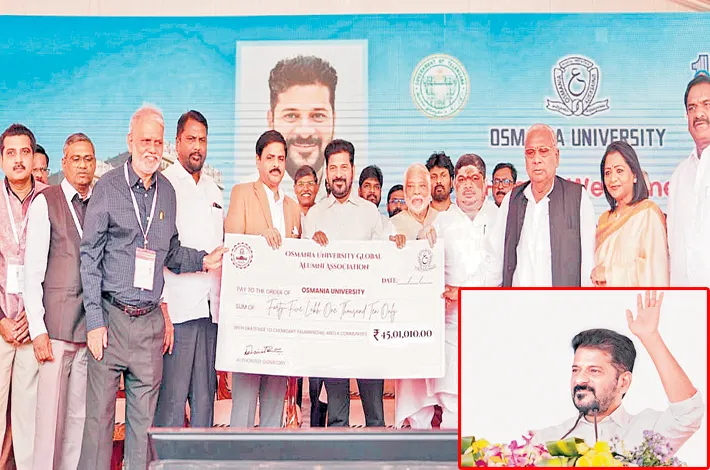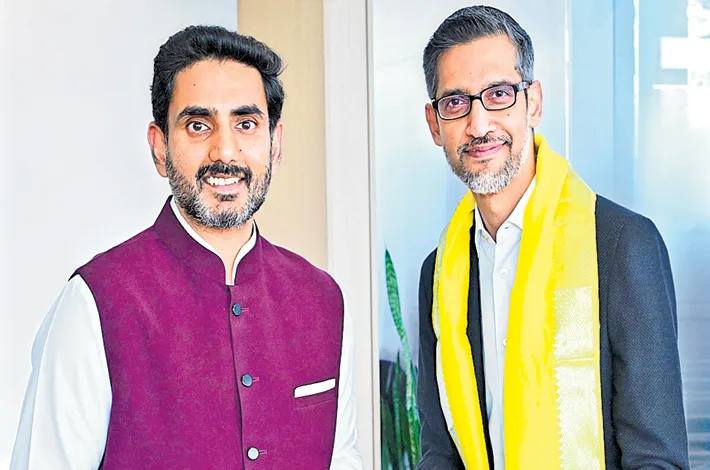Dhoolpet’s idol-makers on the last leg
21-08-2025 12:00:00 AM

Rising lease costs for open plots, heavy reliance on financiers, and shrinking profit margins are forcing several small-scale idol makers to abandon their craft
Hyderabad’s hub for Ganesh idol-making, Dhoolpet is witnessing a slow but noticeable transformation. Once a bustling locality where entire families dedicated themselves to crafting idols, the future of this centuries-old tradition now hangs in the balance. While a few renowned workshops continue to thrive, many smaller artisans are stepping away from the profession, citing financial stress, lack of space, and changing aspirations of their children.
For decades, Dhoolpet has been synonymous with clay and plaster idols, attracting buyers from across Andhra Pradesh, Karnataka, and Maharashtra. But today, many of its narrow lanes are filled with stories of struggle. Rising lease costs for open plots, heavy reliance on financiers, and shrinking profit margins are forcing several small-scale idol makers to abandon their craft. Some continue the work from their homes, unable to afford the soaring rental prices of workshop spaces.
Speaking to Metro India, veteran artisan Laxmi Narayana, who runs the well-known Lakshmi Narayana Kalakar, started at the age of 14 but is sceptical of his children continuing the tradition. We too do not want to force them as it takes a lot of passion and hard work. He says, “We employ 25 people and the number swells to 40 during peak season. We sell nearly 150–200 idols every year, and buyers come from neighboring states,” he said.
Another leading figure, Subhash Singh of Dhruv Kalakar, described the painstaking work behind each idol. His family has been in the trade since the 1950s, with their distinctive designs—especially Ganeshas with human-like faces—gaining wide popularity. “It takes months of effort—arranging raw materials, woodwork, fabrication, and managing labour. Nearly 50 percent of our workers come from other states,” he explained. He also recalled how the shift began when the government banned gudumba (illicit liquor), which earlier sustained livelihoods in Dhoolpet, pushing many to work in idol-making workshops instead. “It took us nearly 20 years to establish ourselves. Now, it is up to the next generation to take it forward,” he added.
Small time idol makers unable to sustain
Bablu Singh, a local artisan, explained how financial dependence traps many in debt. “Artists often borrow from local financiers to buy raw materials. But monthly interest payments eat into whatever little profit we make,” he said. According to him, more than 1,000 people, both big and small, are involved in idol-making in Dhoolpet every year. Work usually begins in March for small artisans, while larger workshops start as early as January.
Many of these smaller craftsmen are now appealing to the Telangana government for support. Their demands include subsidized land to make idols on a larger scale, financial assistance, and recognition of their cultural contribution. “Without government help, this tradition will slowly disappear. Big players may survive, but small idol makers are already being pushed out,” said Bablu Singh.
While Dhoolpet still echoes with the sounds of chisels and hammers shaping Lord Ganesha, the rhythm of this artistry is changing. For families that have carried the legacy for generations, the question remains: will the next generation embrace the clay, or will Dhoolpet’s famed idols become a memory of Hyderabad’s cultural past?








